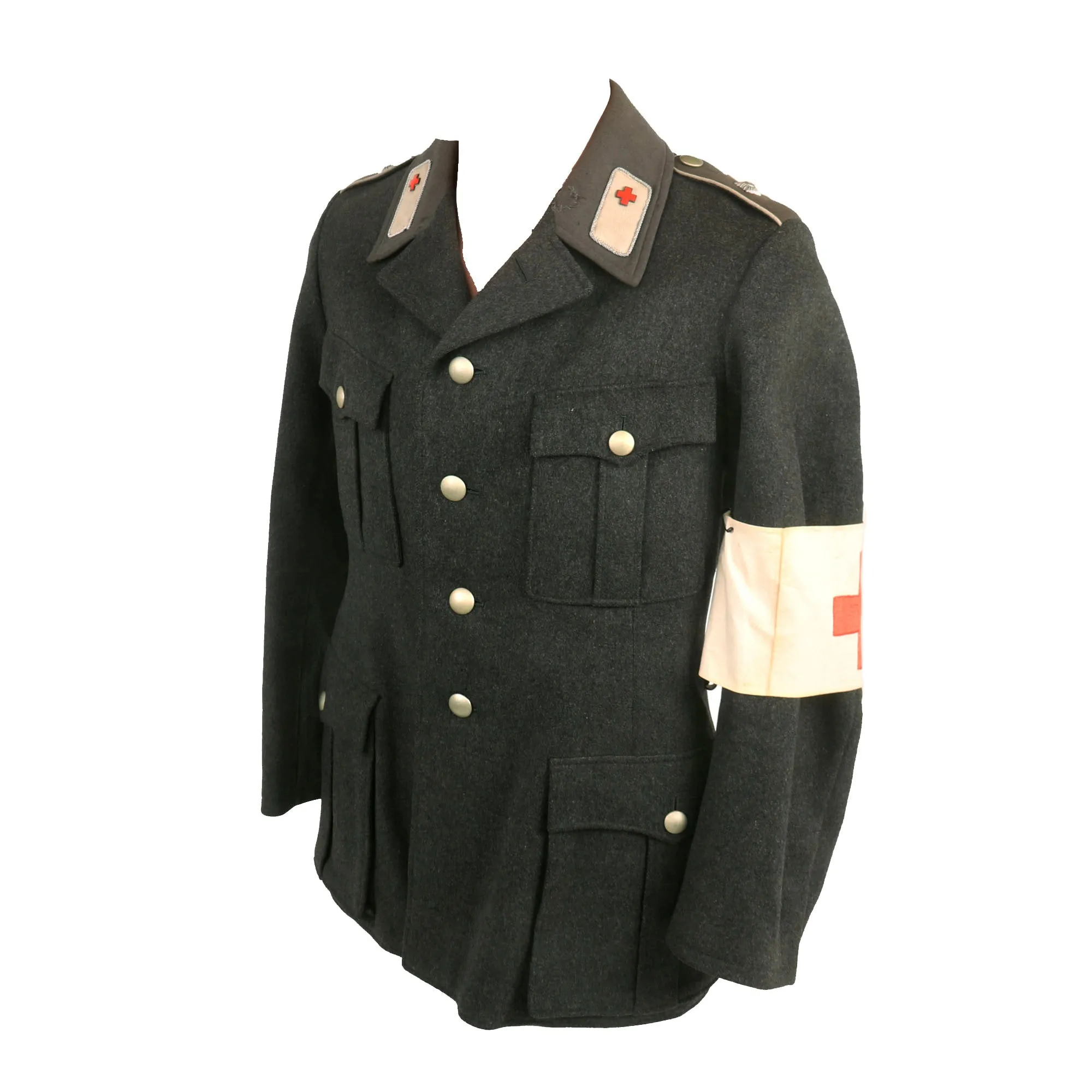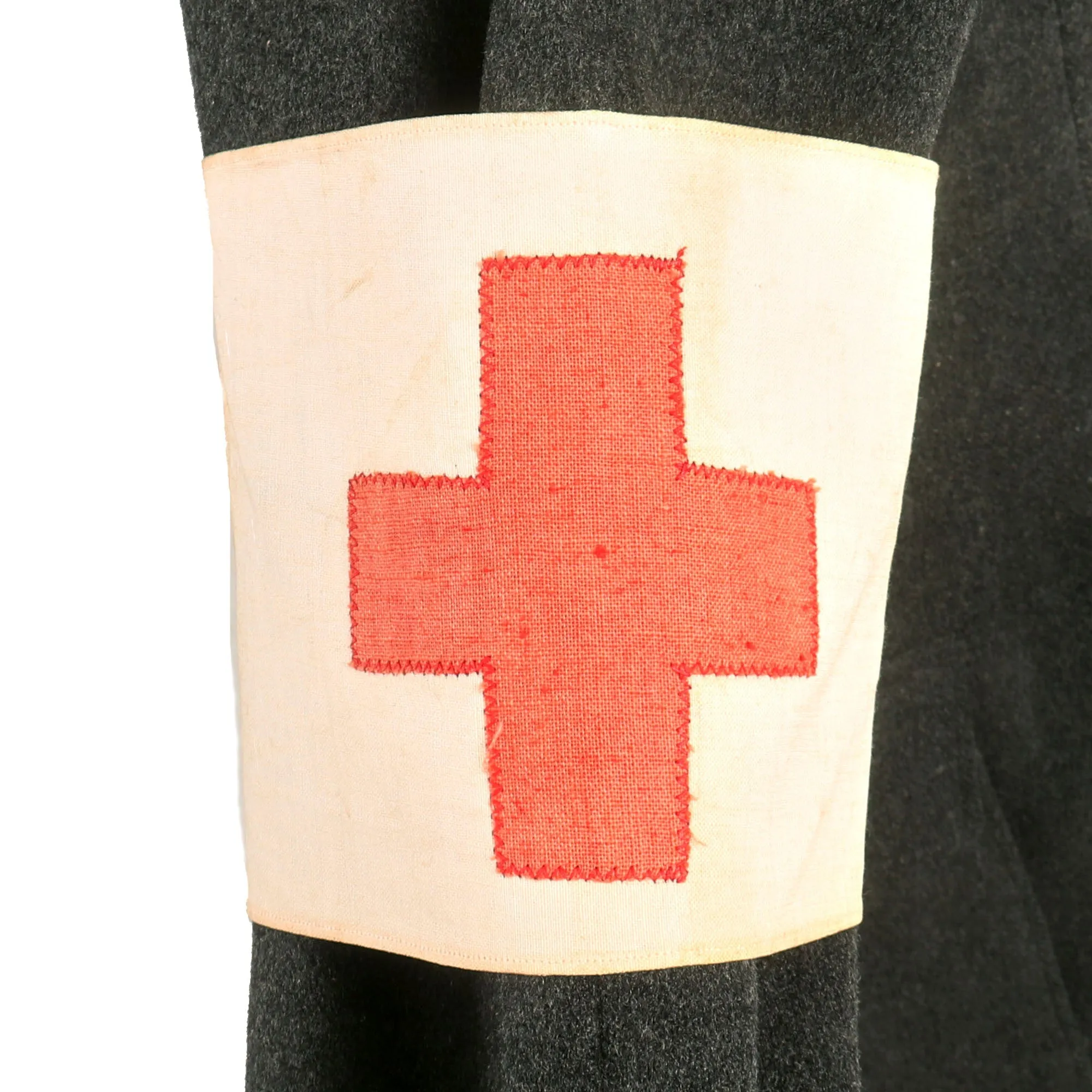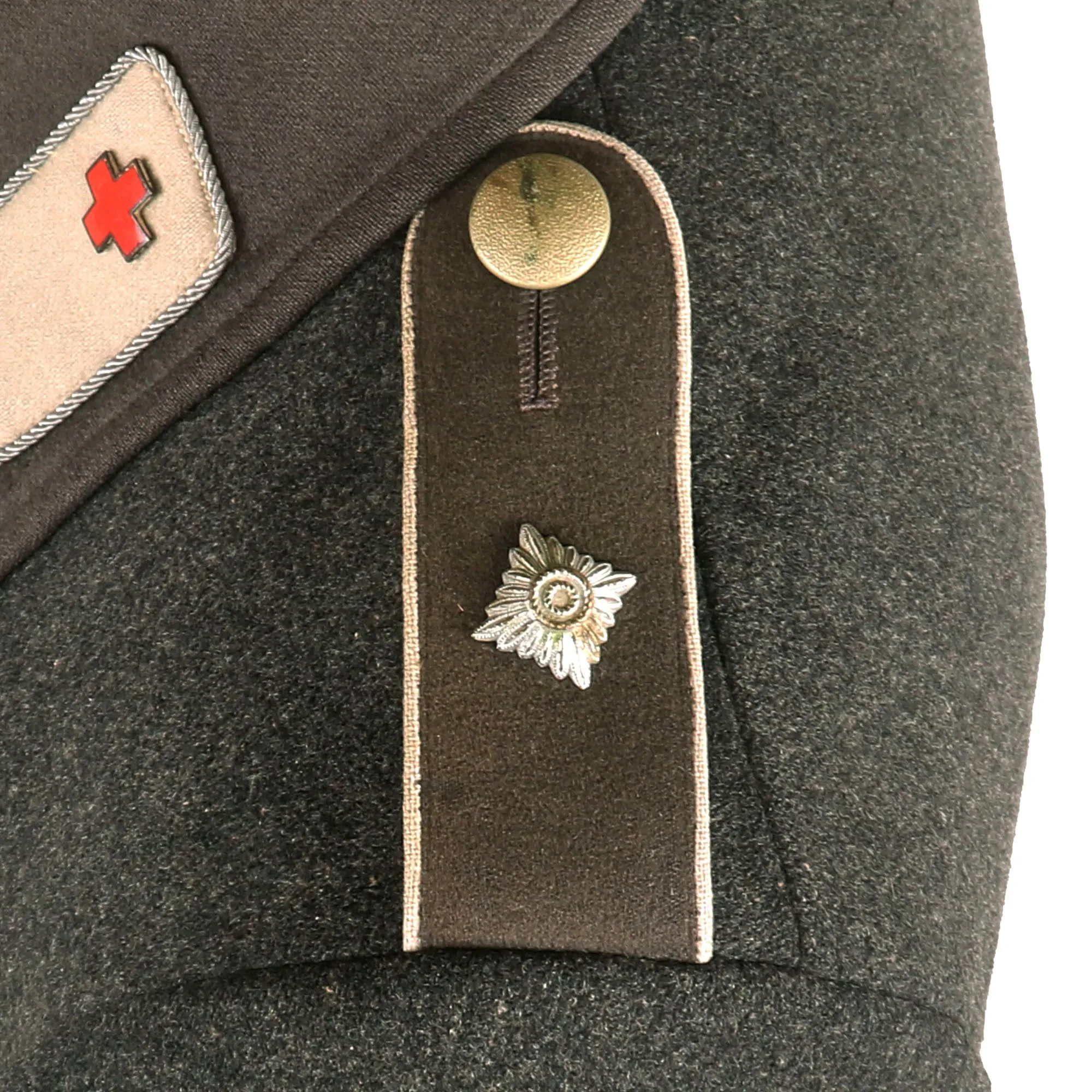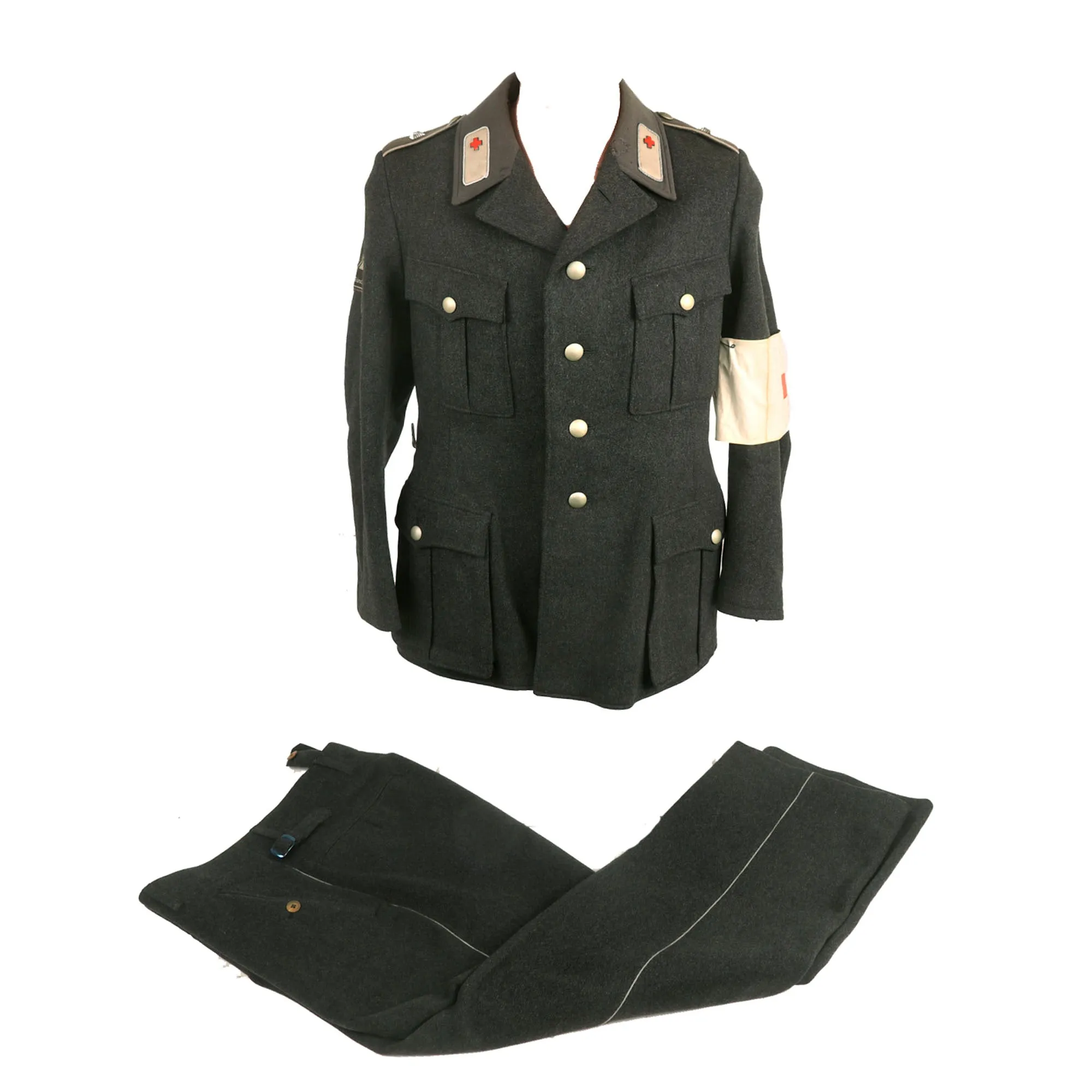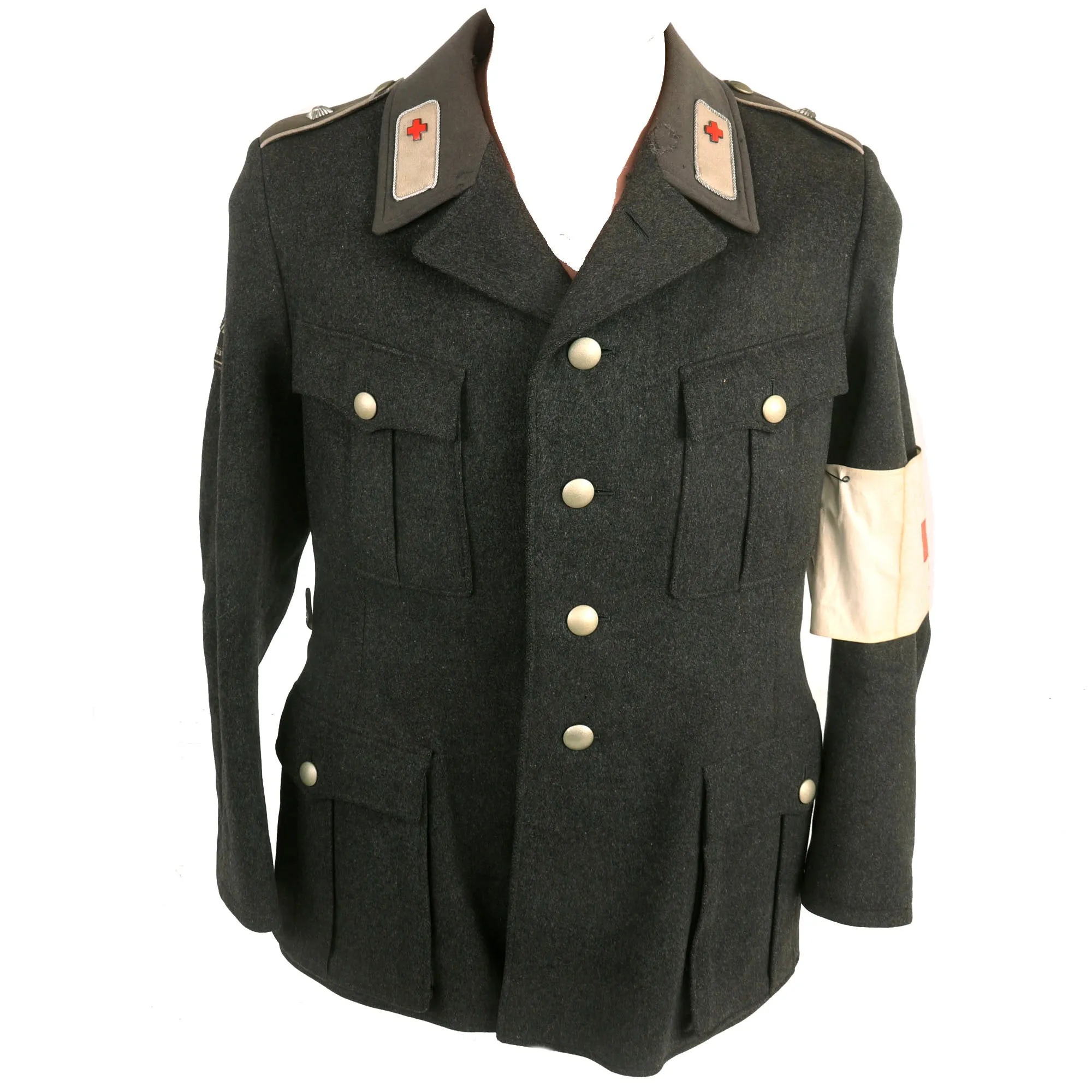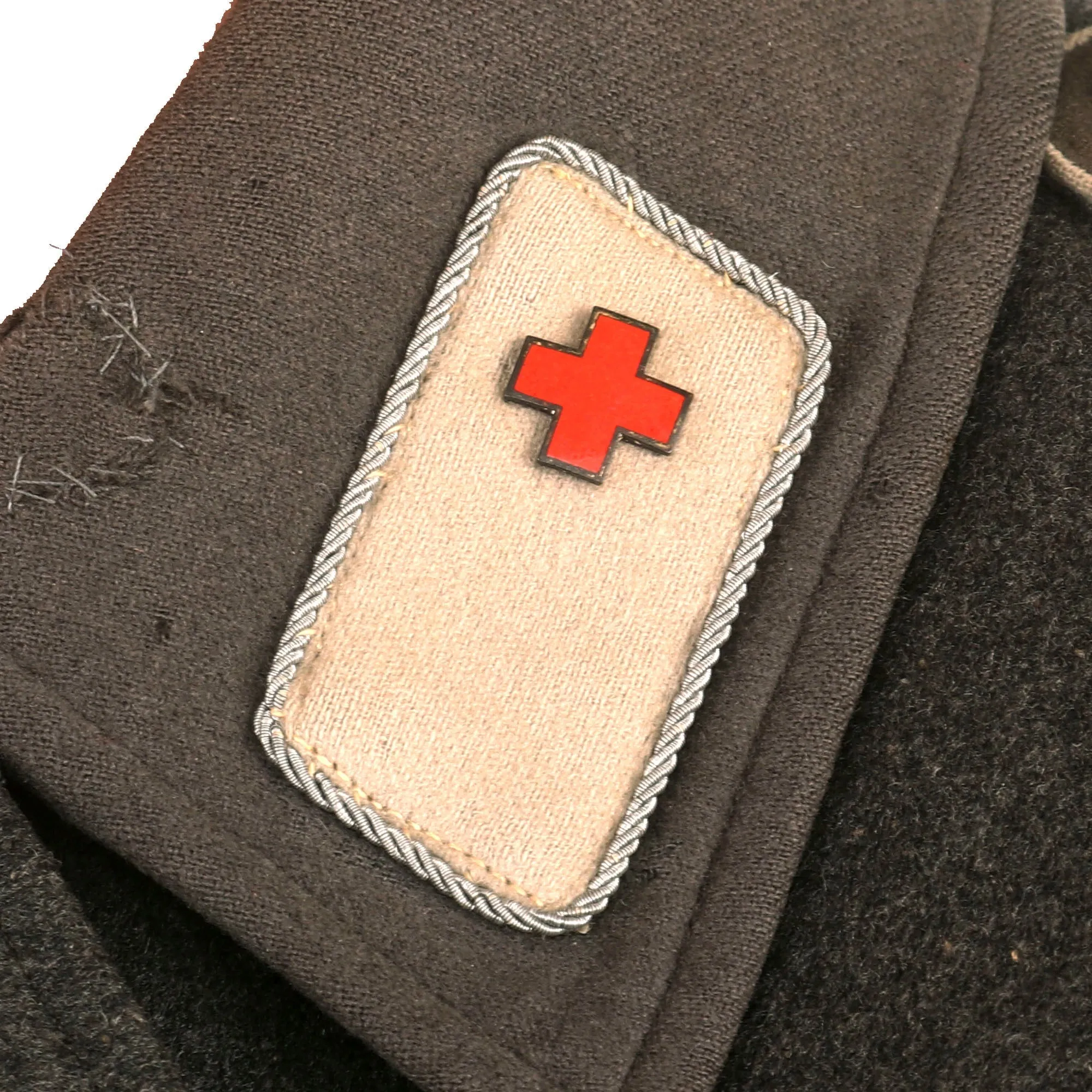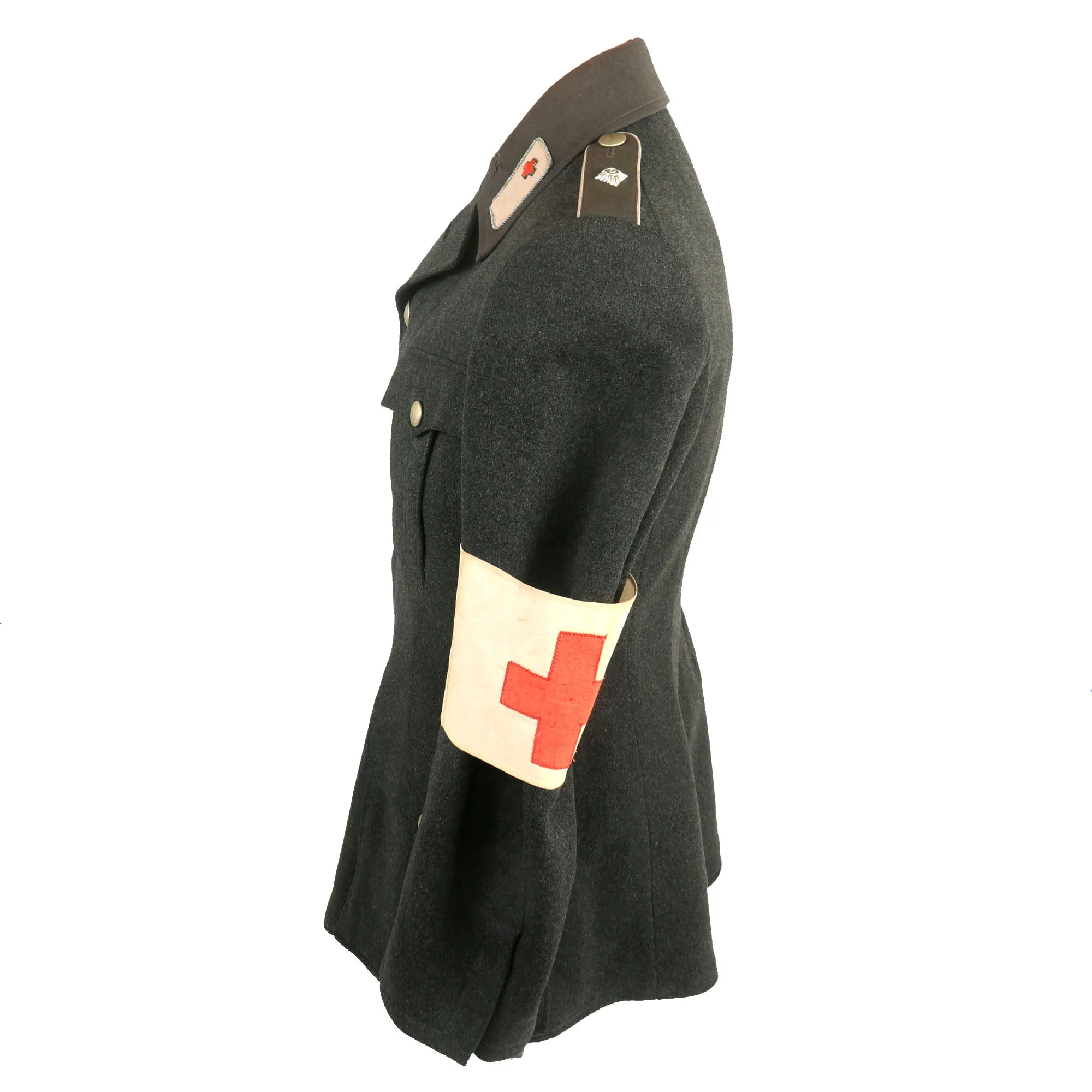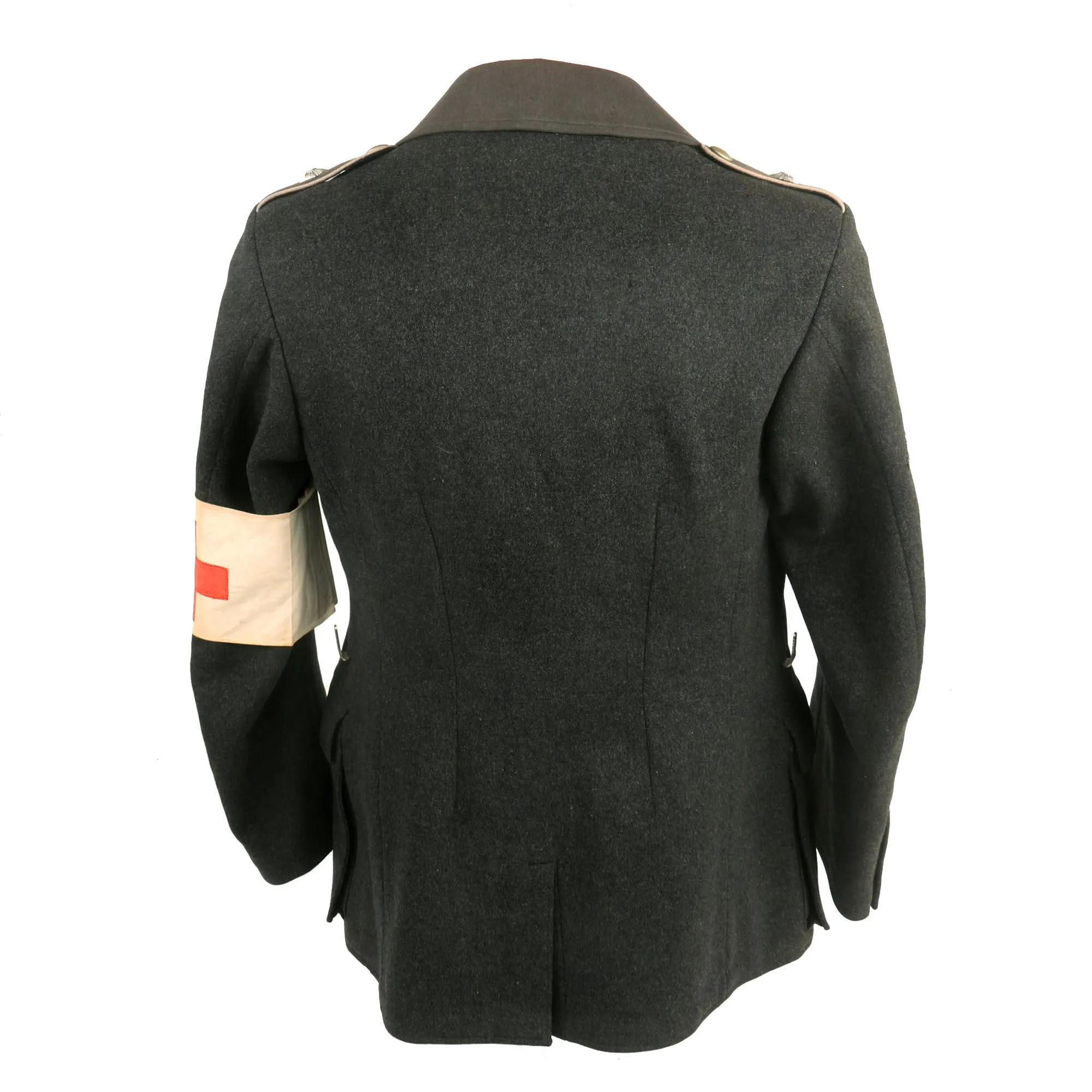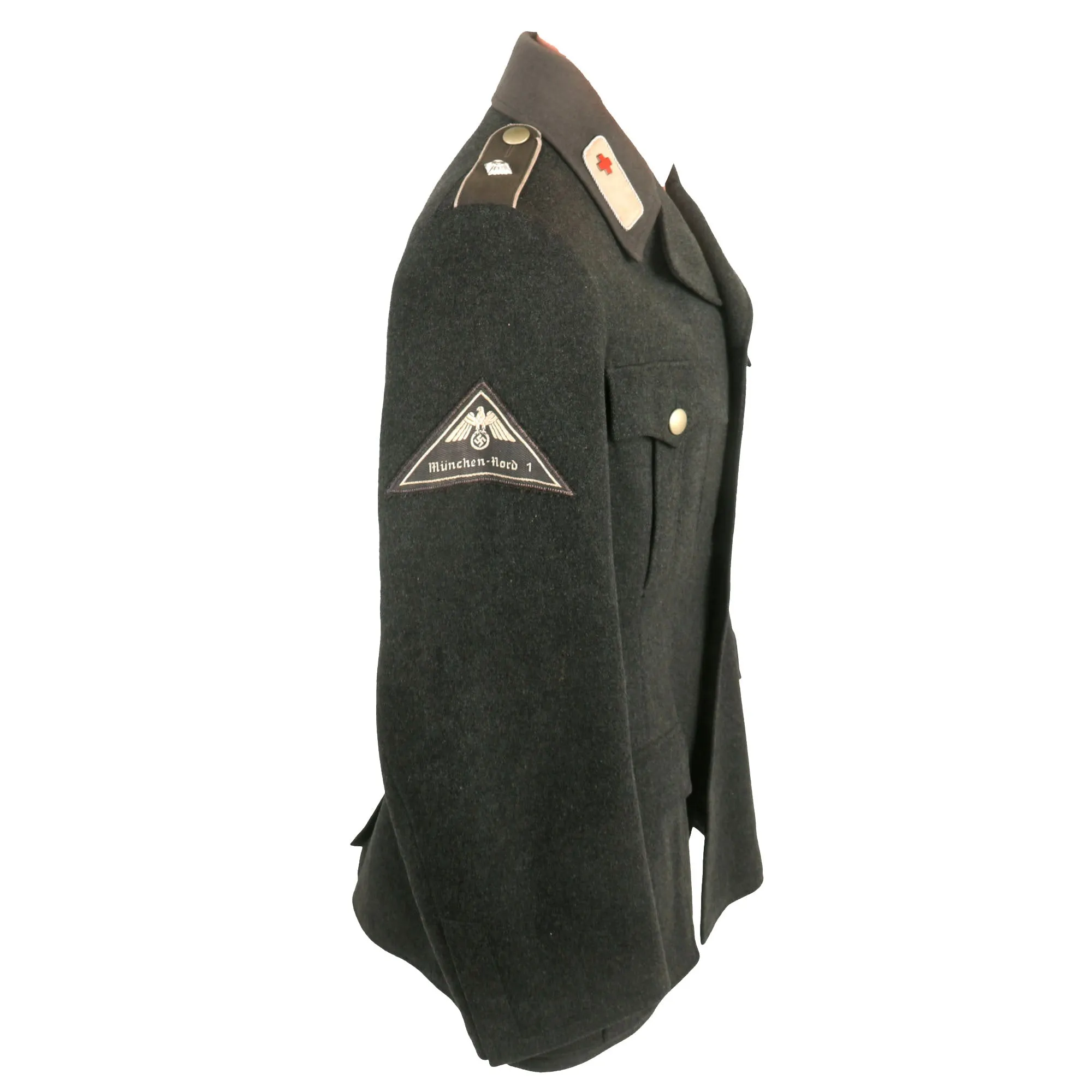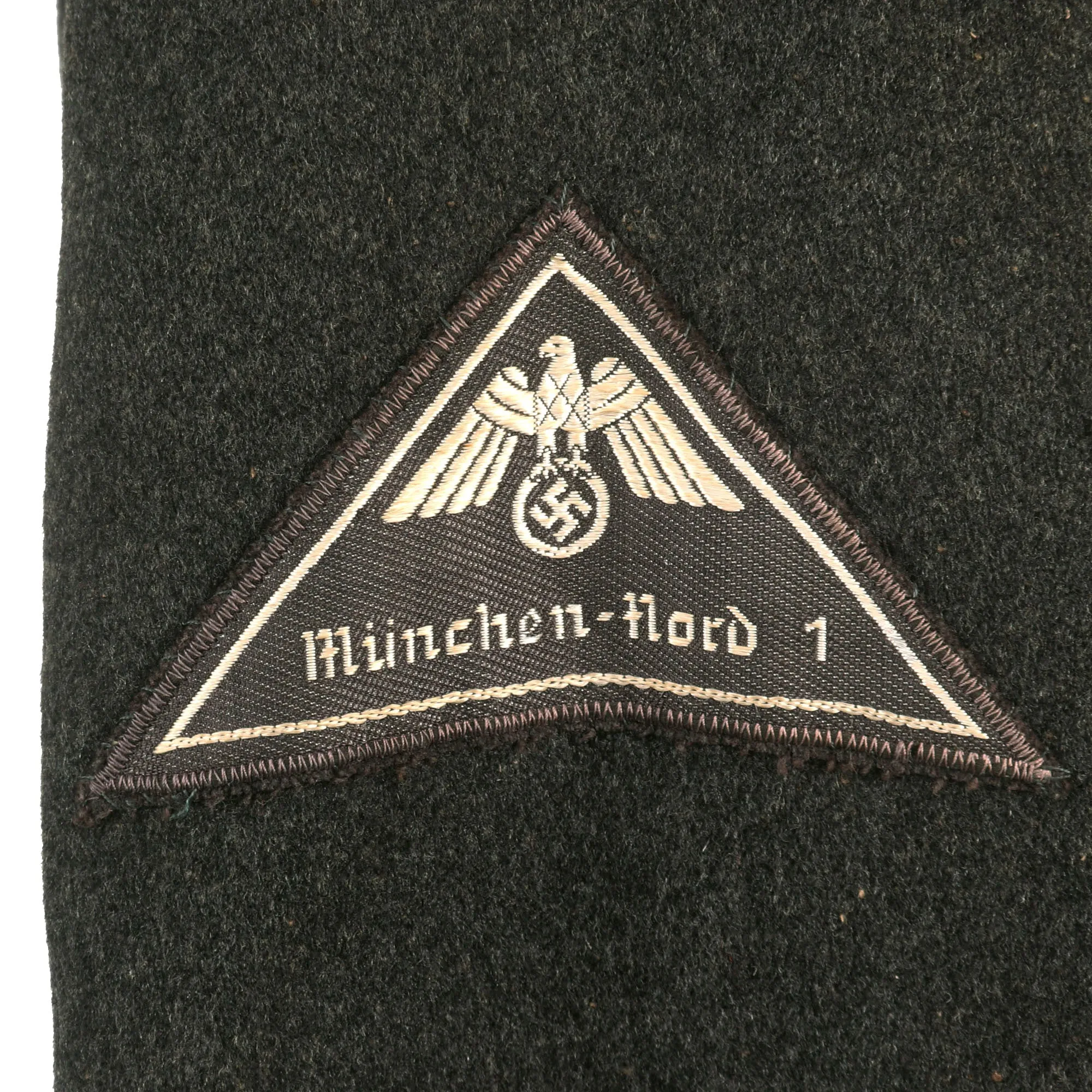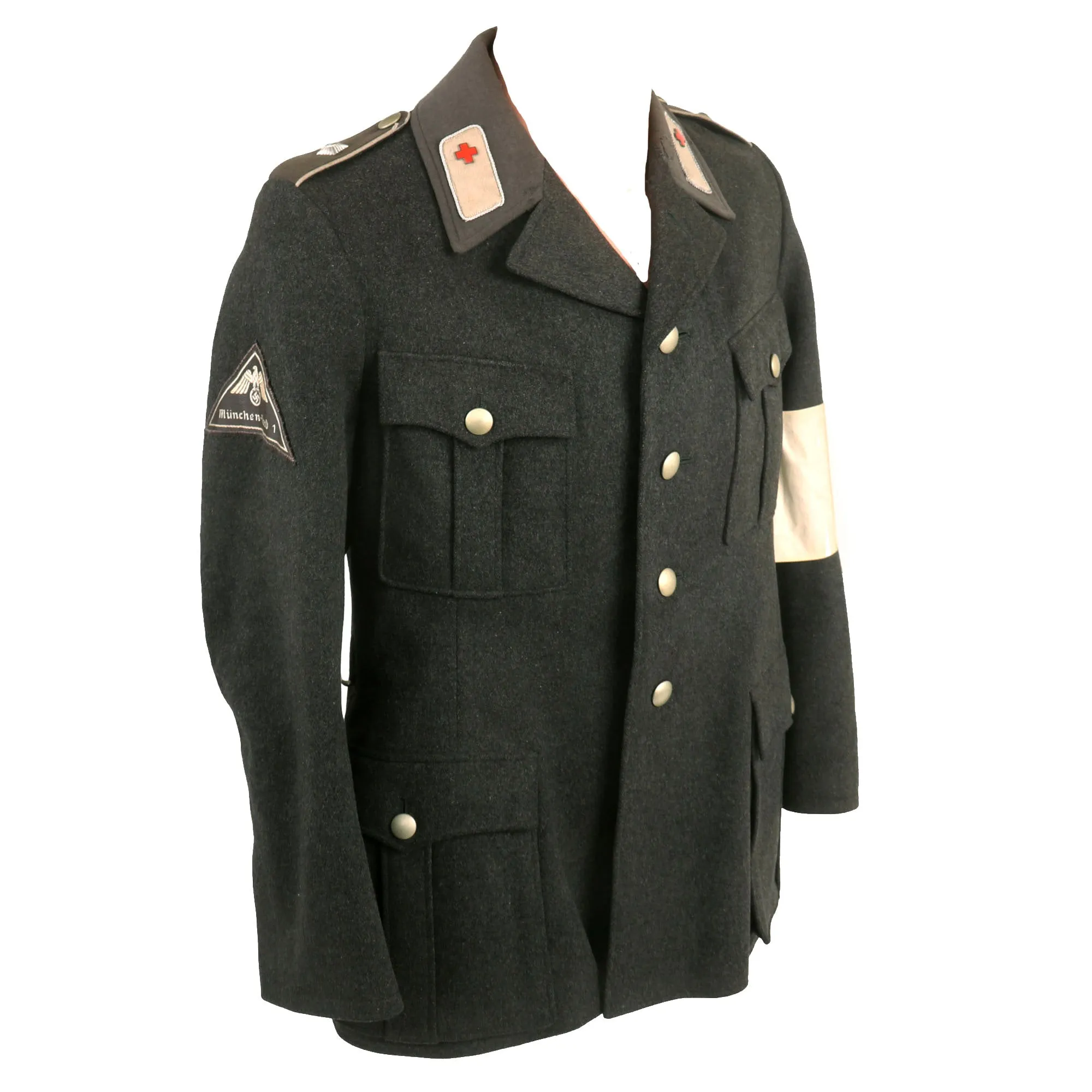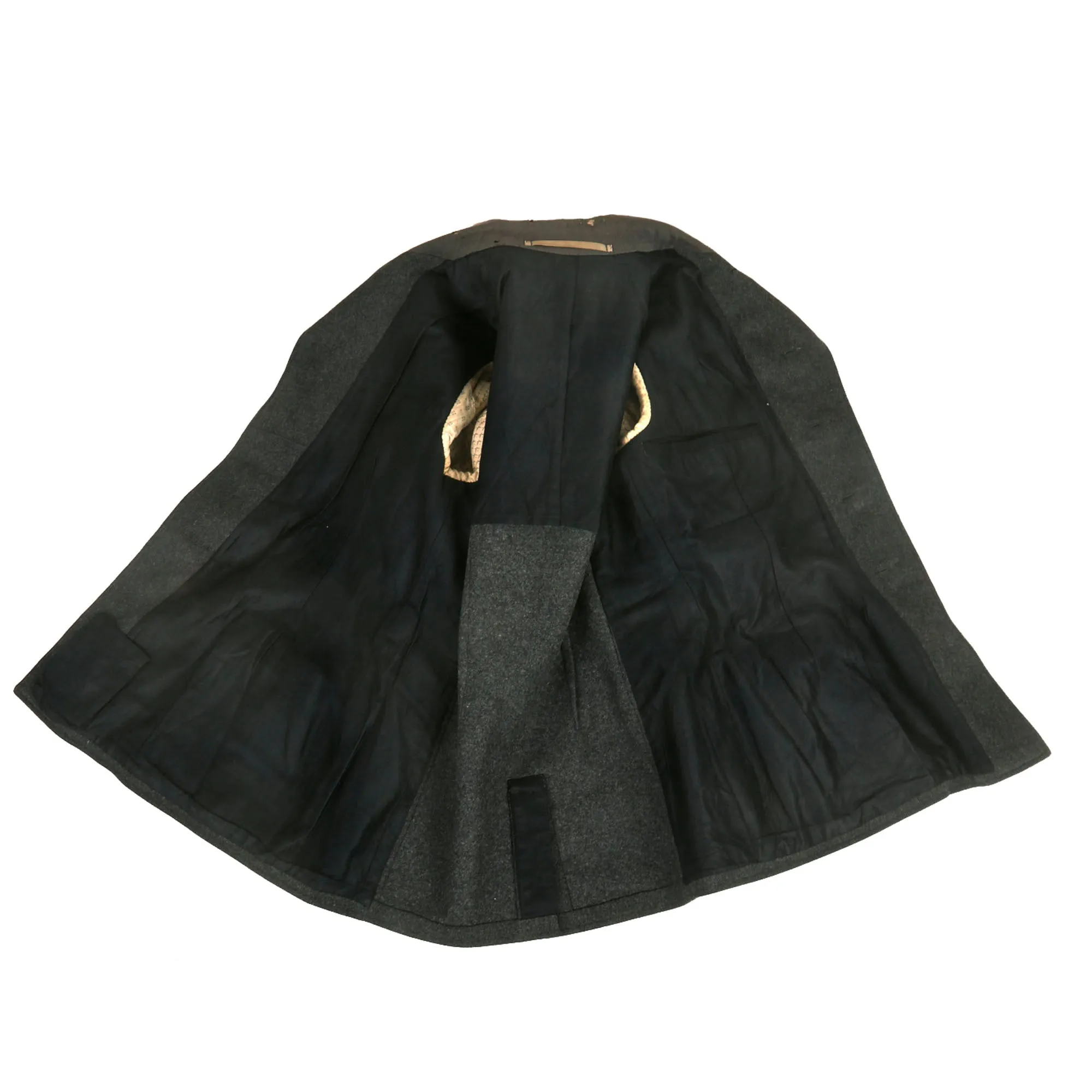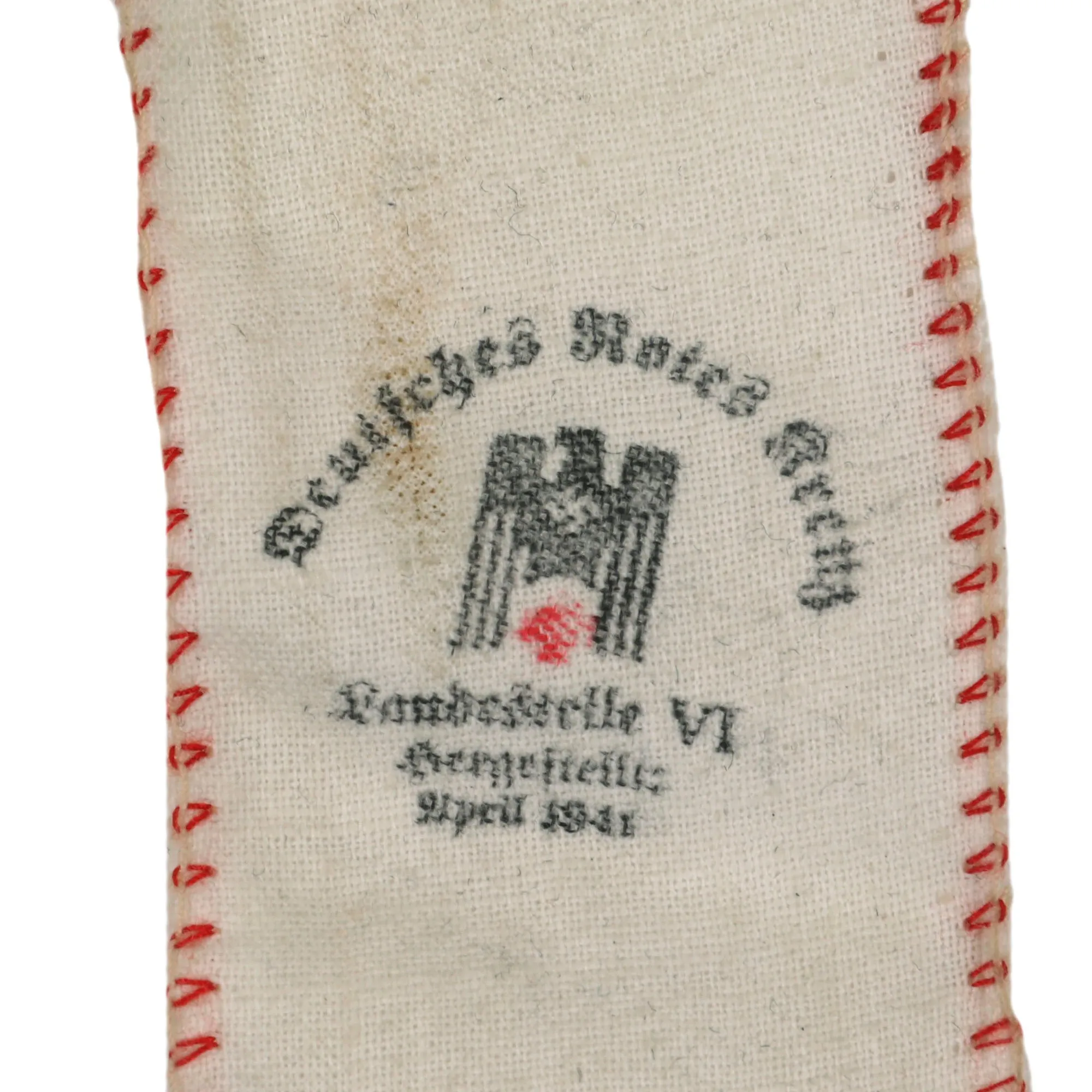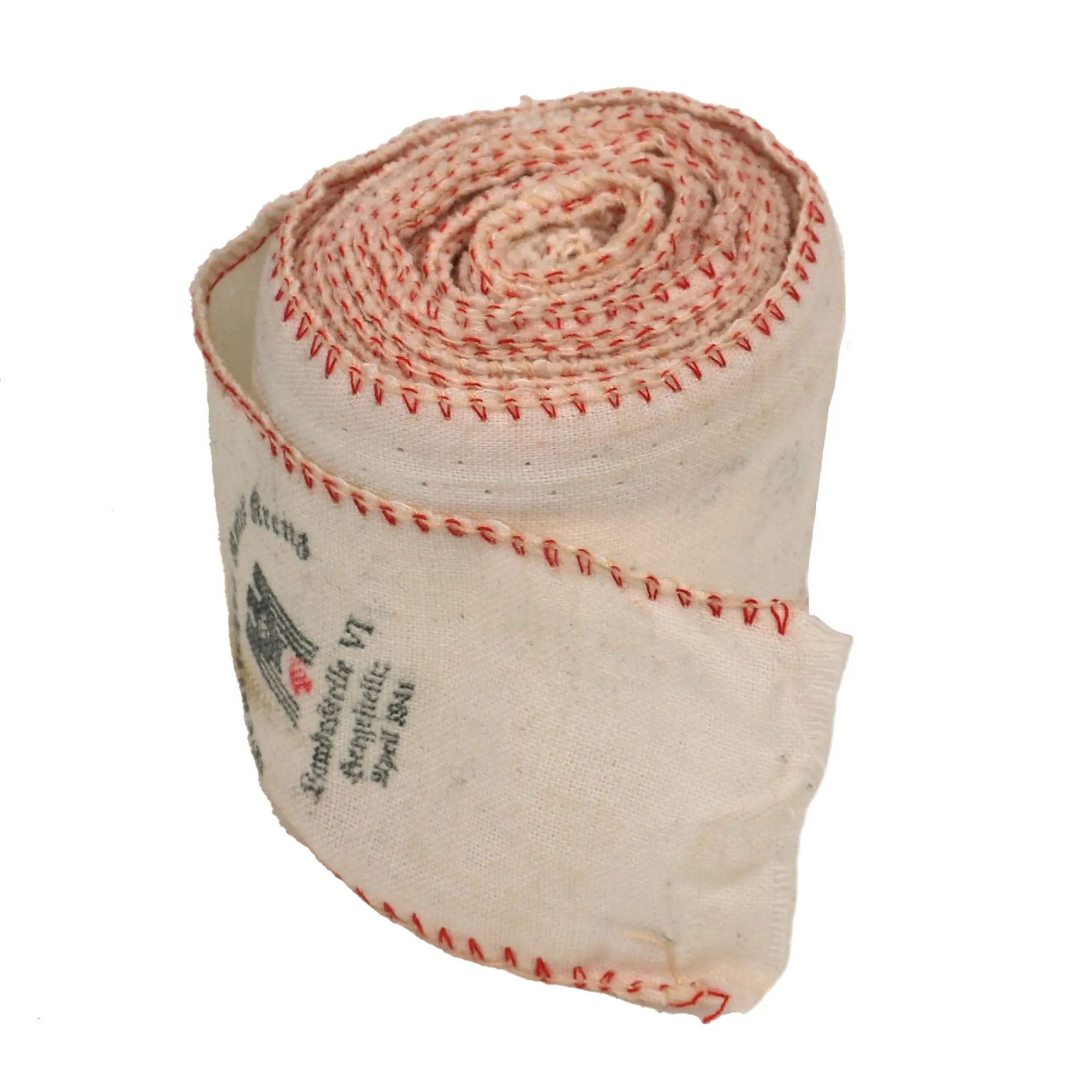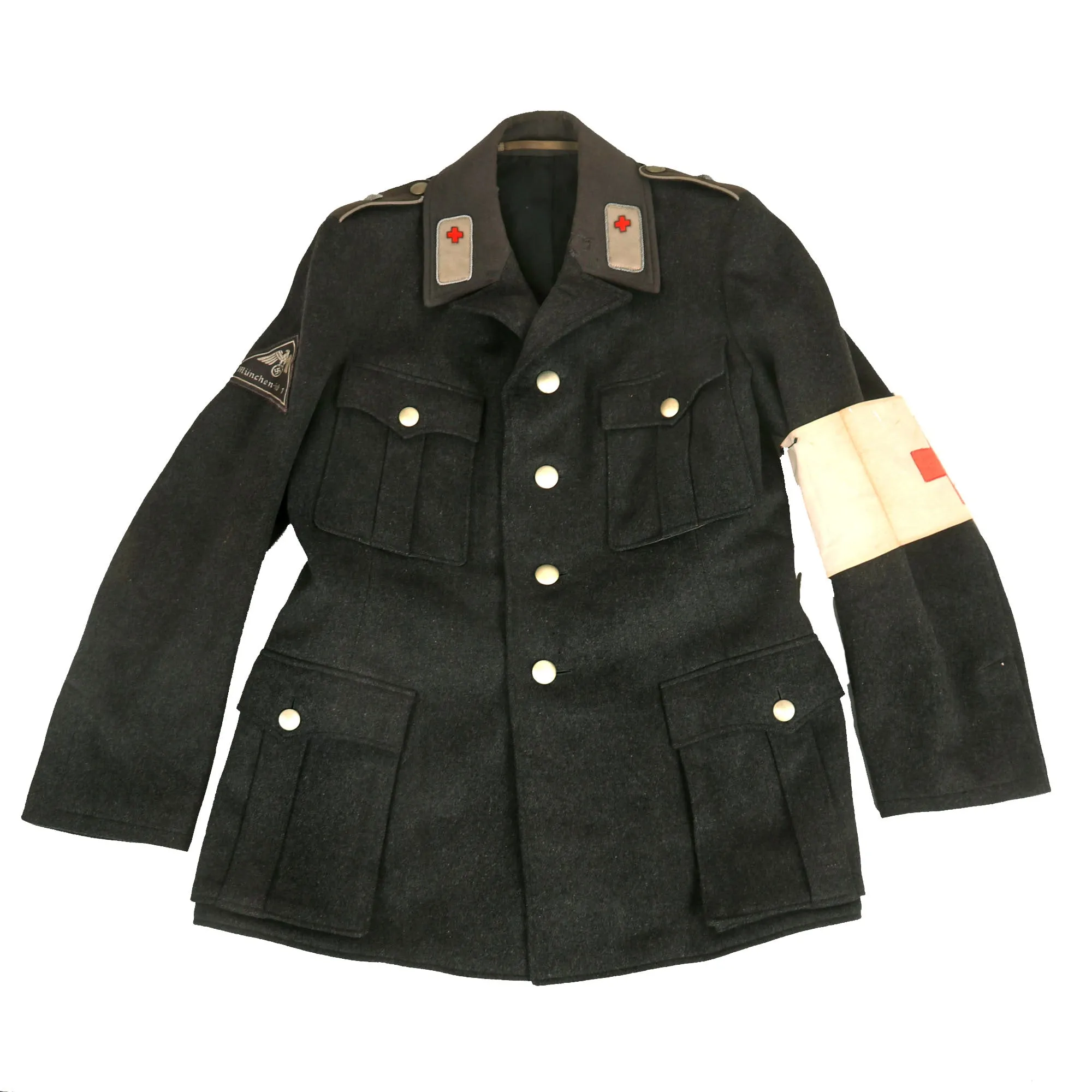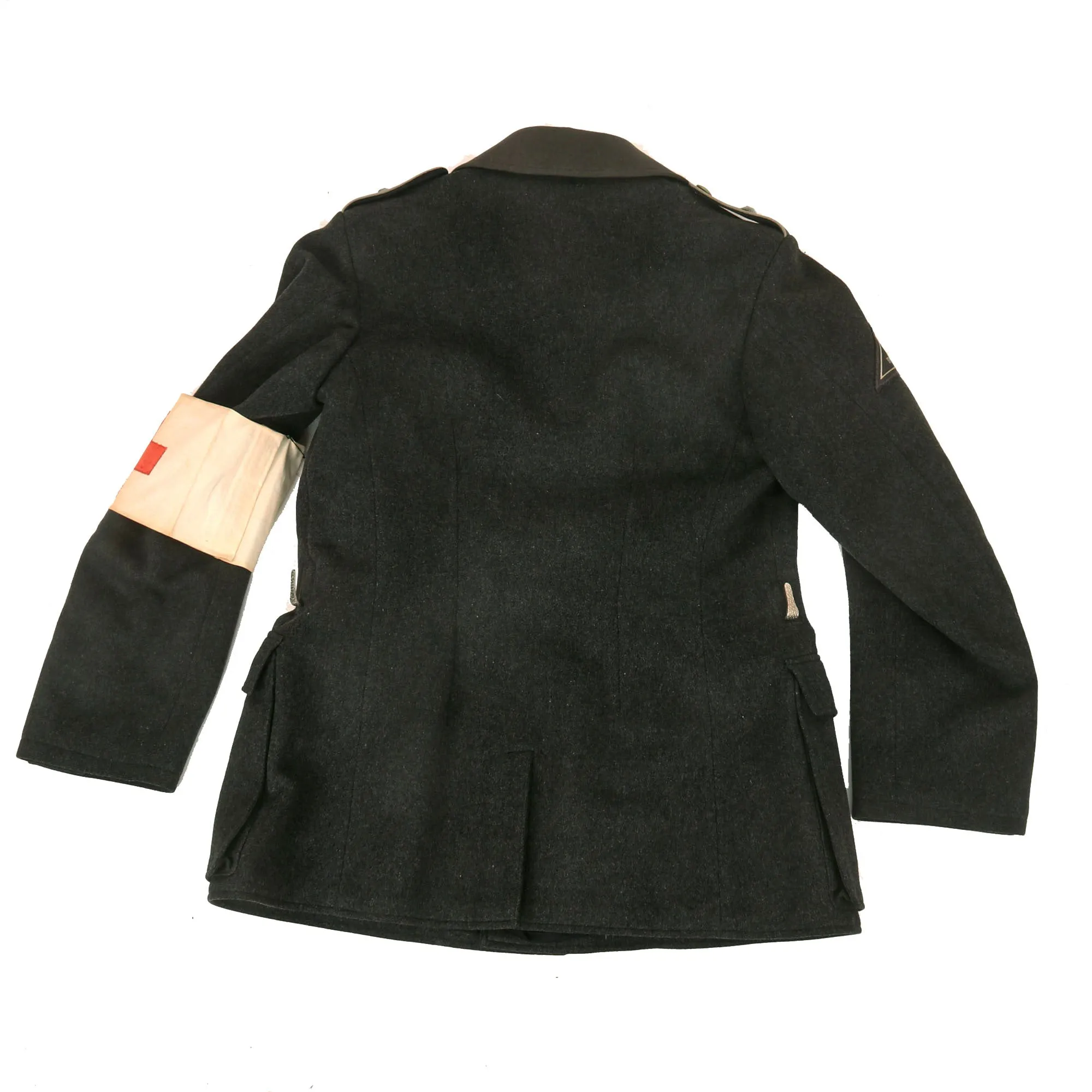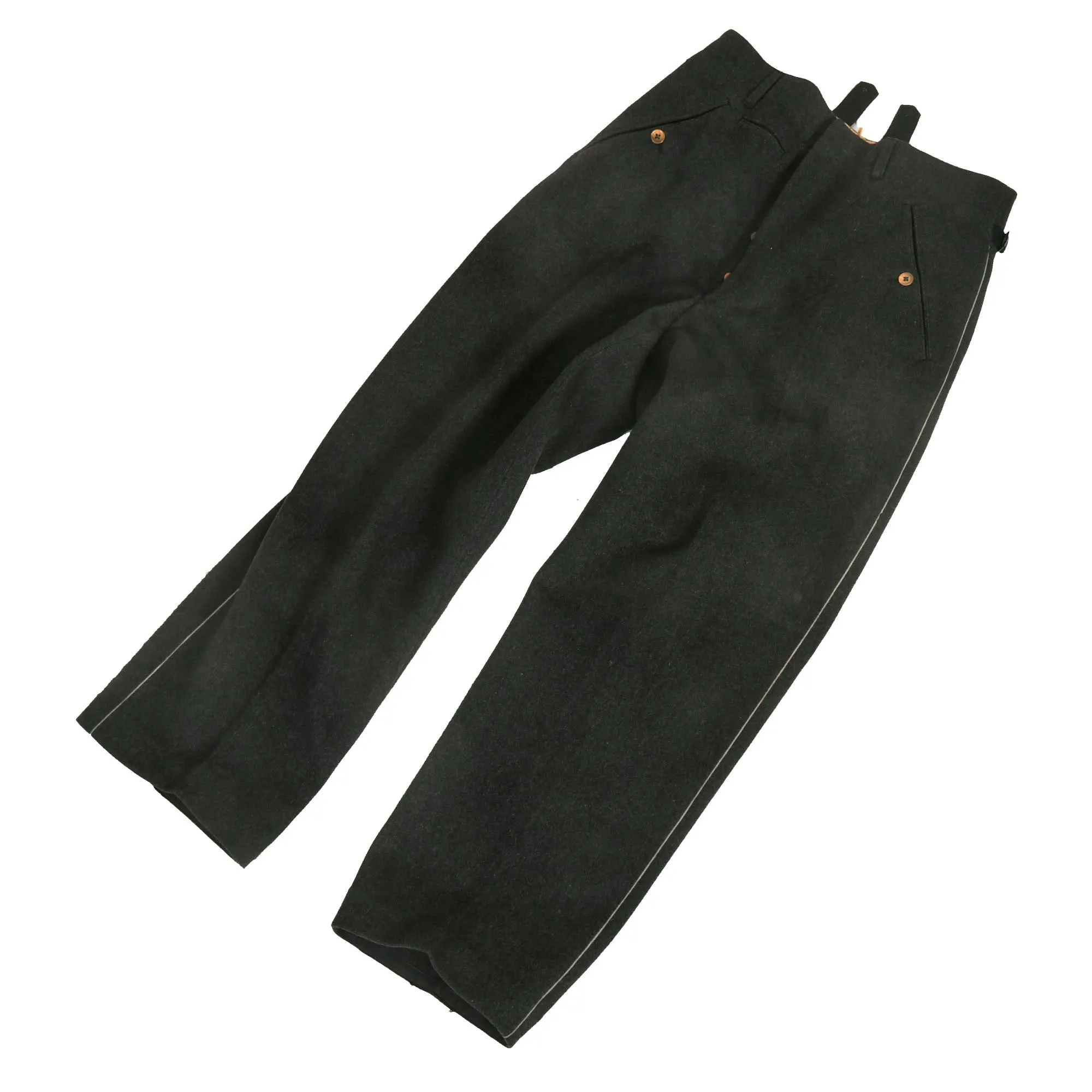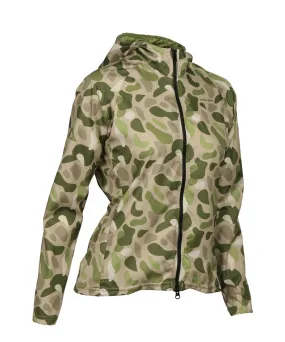Original Item: Only one available. This is a lovely WWII German Duetsches Rotes Kreuz (DRK) Officials Uniform Tunic with original Insignia, complete with a pair of correct matching trousers. The DRK was the German Equivalent of the American Red Cross, and served a function similar to their allied counterparts, however they actually maintained a military rank structure, similar to many civic organizations during NSDAP rule. This tunic is for the DRK EM/NCO Rank of Vorhelfer (Front helper), roughly equivalent to a Heer Army Unteroffizier in rank. The DRK did not really have distinct Enlisted and Non Commissioned officer ranks in the traditional sense, and Vorhelfer is actually the second lowest rank.
The tunic is fabricated from a coarse dark gray wool, and is very similar to the standard Heer Army tunics of the time. The lay down collar features a soft gray covering on the top portion, going onto the sides and ending at the lapels. The front features a 5 button front closure, including the button on the lay down collar. The tunic is fitted with four pleated pockets that all have scalloped top flaps. The buttons are the standard pebbled type, and all look to be maker marked on the back. The interior is lined with what feels like black brushed cotton, or a cotton rayon blend, and the sleeves are lined with a white cotton / rayon blend with a diamond pattern.
The tunic is adorned with EM/NCO schulterklappen (shoulder straps), each board with mid-tone gray wool uppers, edged with a light gray piping. They each feature a single rank "pip" indicating the rank of Vorhelper. The attached red Cross collar tabs are light gray and trimmed with silver bullion, each adorned with a red enamel cross. The right sleeve has a lovely machine embroidered EM/NCO triangular DRK patch insignia which appears to have been hand sewn on. It reads München-Nord 1, which is the assignment location, Munich in Bavaria, Germany, 1st District. The left sleeve has a lovely white Red Cross armband with a sewn on red Geneva Cross. It has a safety pin attaching it to the sleeve.
The inner left breast pocket also contains what looks to be a small DRK marked April 1941 dated bandage. It has the DRK logo, as well as Landestelle VI, as well as some other information we cannot read.
Condition overall is very good, though the tunic does show some signs of honest wear from use, age, and storage. The collar area especially shows some wear through the fabric, and there are tears, repairs, and other issues consistent with long service. The rest of the tunic is in great shape, showing no major mothing or other wear.
The included trousers are in great shape, and match the color of the tunic nearly perfectly. They have the correct light gray piping down the sides of the legs, and have the standard 4 pockets, with a smaller pocket next to the front closure.
A really lovely DRK set with some great research and display potential!
Measurements:
Collar to shoulder: 9.5"
Shoulder to sleeve: 23.5”
Shoulder to shoulder: 15.5”
Chest width: 18"
Waist width: 18"
Hip width: 21.5"
Front length: 30"
Pants:
Waist: 16"
Inseam: 29"
History of the Deutsches Rotes Kreuz in WW2:
In April 1933 the NSDAP Reich Interior Minister Wilhelm Frick made it clear to Winterfeldt-Mencken that this policy would no longer apply; instead, the DRK would be expected to play its part in supporting the armed forces in any future conflict. Shortly after this the DRK was informed that the head of the SA Medical Corps, Dr. Paul Hocheisen had been given responsibility for voluntary nursing organizations.
On 11 June 1933 Frick was invited to speak at the Red Cross Day. He declared:
"The Red Cross is something like the conscience of the nation. ... Together with the nation, the Red Cross is ready to commit all its strength for the high goals of our leader, Adolf AH".
The DRK was quick to respond to the changed circumstances, indeed Winterfeldt-Mencken had always been opposed to the system of parliamentary democracy. The Workers' Samaritan League, a left-wing humanitarian organization, had always been an unwelcome competitor to the DRK. Hocheisen very quickly arranged that it should be taken over by the DRK. Similarly, the DRK moved quickly to rid itself of left-wing members, and in June 1933 it also decided that the NSDAP "Law for the Restoration of the Professional Civil Service" should be applied and dismissed its Jewish employees.
However the DRK was still a member of the Red Cross movement, and Germany remained a signatory to the Geneva Convention, so it was not possible for them to apply the same level of "Gleichschaltung" to the DRK as it was to other organizations. The attitude of the ICRC towards the DRK’s exclusion of the Jews was later expressed in a letter written by Max Huber in 1939. According to him, the primary obligation of neutral treatment as foreseen in the Geneva Convention was to the victims of war, and not to the helpers. He argued that as it was impossible to prescribe rules which were in conflict with the laws of a country, it was better to take a flexible approach than to risk the break-up of the universal Red Cross movement.
Despite Winterfeldt-Mencken’s professions of loyalty to the regime, they were not reciprocated and a replacement was sought. President Hindenburg was able to influence the decision, and selected Charles Edward, Duke of Saxe-Coburg and Gotha who was Queen Victoria’s grandson, rather than Hocheisen. Charles Edward had moved from England to Germany at the age of 15, had subsequently served as a general in the German army in the First World War, and had long supported right-wing movements in general, and AH in particular. He was already honorary president of the National Socialist Motor Corps.
Charles Edward became President of the DRK in December 1933, while Hocheisen became his deputy. Not unsurprisingly, they did not work well together. There followed a typically NSDAP-Darwinist power struggle, in which Hocheisen was eventually able to assert his authority – only to be ousted by the top SS doctor Ernst-Robert Grawitz at the start of 1937. At the end of 1938 the German Red Cross officially came under the control of the Ministry of the Interior's Social Welfare Organization, becoming de facto a NSDAP entity, led by Grawitz in the role of 'acting president', with Oswald Pohl as chairman of the board of administration.[9] By this stage there was no doubt about who was in charge, though Charles Edward remained in his post until 1945. As he was related to European royalty and spoke good English, he was a useful figurehead for the DRK, but Grawitz was different – he would turn up to International Red Cross meetings in his SS uniform. Grawitz took a radical approach to his task. He introduced a hierarchical chain of command into the DRK, and arranged for a new large and imposing "representative"- presidential building to be constructed in Potsdam-Babelsberg, complete with a balcony from which speeches could be made. His ideal concept for the DRK was that of a "healthy structure which would fit itself organically into the laws of life in the National Socialist Third Reich".
In the years after the NSDAP takeover, as well as adopting NSDAP salutes and symbols, the DRK introduced NSDAP ideology into their education. Rescue teams were trained in military conduct, basic concepts of National Socialism, genetics, racial hygiene and demographic policy. More senior staff – doctors, nurses and managers were educated in demographic policy, racial history, racial hygiene, the biology of inheritance and the foundations of genetics. As a preparation for war, the DRK focused on training people to deal with air raids and gas attacks and organised joint exercises with the police and the fire brigades.




